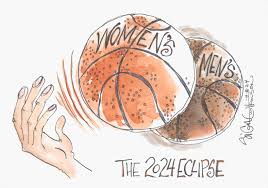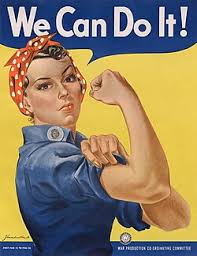1
Section One: The Fundamentals
A) What do we know about sport? What are common assumptions we make about sport and society?
Sport builds
Sport provides opportunities for
Sport encourages
Sport reflects
Sport transcends
Sport speaks
Sport is a measure of
Sport often does promote social mobility through the interactions with teammates and the variety of experiences one gets access to once apart of a team, such as team-building experiences and travel. However, this might be untrue for a large population of those participating in sport. I agree with my peers about the financial costs that come with playing a sport, even on a recreational level. Travelling out of province or even out of town is out of reach for some families, and the cost of equipment alone is astronomical. My 7-year-old brother’s spring hockey team cost my parents $1600.
On a different note, sports promoting social mobility is often untrue for people apart of the 2SLBTQ+ community. Where participants are more likely than their peers to be left out or discriminated against. So, if anything, sport actually does the opposite for this community and has created the narrative that sport may not be a safe space for them.
Exercise 3: Notebook prompt
What are some other metanarratives about sport that you are familiar with? Find an image or video clip or draw something yourself that captures this idea…
So what? Why does any of this matter? Does it matter? As something we grow up with – live with – play through – we don’t often interrogate the meanings of sport, and perhaps we don’t want to.
But being aware of these assumptions and metanarratives is especially important, I would argue, because of the centrality of sport to our everyday lives, the role that sport plays in shaping our childhood and worldviews and….. [finish that thought]
| As referenced in the module, unity and camaraderie is a metanarrative attached to sport. The module defines this as “The metanarrative of unity and camaraderie in sports emphasizes the power of teamwork, solidarity, and mutual support among athletes, coaches, and fans. Sports are seen as a unifying force that brings people together, fosters connections, and builds community.” While this can sometimes be seen as true, there are a multitude of incidences of coaches in minor leagues being suspended for outbursts or even team and parent fights in parking lots after games.
Links to examples are below:
While it isn’t always the case, and sport does bring genuine “unity and camaraderie,” it is important to acknowledge that isn’t always the case. Genuinely, as I type this, I am witnessing an argument between parents at the Arena I work at.
|
B) What is social justice?
Exercise 4: Padlet Prompt
Think back to the last section and try to look at some of the ideas we discussed differently. How might sport and social justice actually co-exist?
Record any images, video clips, or gifs you added to the padlet and identify a point of intersection between sport and social justice (can be an issue or a barrier or a debate or something you would like to explore in more depth in this course) . Screenshot or paste in your response below.
|
Access to opportunity is one of the largest ways that we can connect sport and social justice. John Lewis said that social justice is “…a communal effort dedicated to creating and sustaining a fair and equal society in which each person and all groups are valued and affirmed”. In not only Canada, but all around the world, sport and recreation is a major theme in socialization and development. Thus, much of our population participates in sport related activity. Having programs that assist with financial burden, drive programs, and things like special Olympics shows our societies effort to creating a fair and equal space, specifically in sport. |
C) Social Justice Reading
(note: this activity is optional!)
D) KINESIOLOGY AND SOCIAL JUSTICE
Exercise 5:
Social justice is a difficult concept to identify because of its:
-
dynamic nature and meaning
-
conflation with other concerns like multicultural education, critical pedagogy, postmodernism, post colonialism, and queer theory
-
it is a process as well as a goal
-
potential for dilution because of multitude of definitions
How does mainstream discourse construct marginalized populations as “being-at-risk” for health and fitness issues?
-
It suggests they lack the capacity for self-management skills.
-
It suggests they lack the capacity for self-compliance in health and physical education.
-
It suggests they lack the capacity for self-discipline.
Healthism constructs members of marginalized populations as Defective ,not responsible citizens, and as “problem to be fixed ” and blamed when government-mandated programs fail to meet their goals
Exercise 6:
What are the implications of bodies-at-risk discourse and the refusal to understand the health gap from a social justice perspective, according to the authors of this article?
| The authors argue that the body-at-risk discourse and refusal to understand the health gap from a social justice perspective can cause significant harm. This way of thinking focuses on blaming individuals for their health problems instead of identifying systemic barriers like poverty, racism, and the overall inequality of accessibility. This reinforces harmful stereotypes, like labelling a group as harmful or problematic, which leads to stigma and discrimination.
|
Section Two: Sport Feminism
Exercise 7: Notebook Prompt
What is feminism? What does it mean to you? Choose one of the images below and explain how it captures your understanding of feminism (or find one that does speak to you and paste this into your pressbook with an explanation of why it matters to you.
| Feminism is the fight for equality of the sexes. To me, this is extremely important. As a woman, I am often seen as not as capable, not smart enough, or too naive. This is particularly the case in sports and has created this bias that women aren’t as good as men are. Which, in many cases, has been proven not to be true.
I chose this photo because the woman pictured here is not the stereotypical one that is usually displayed. This woman is strong, has short hair, and is presented to be more masculine. It is important to acknowledge that a lot of women do not fit the stereotypical image, and no one should expect them to. The message of “We Can Do It!” helps portray that women are capable of anything, and it’s not just men who can play sports or do heavy labour jobs. This, however, does go both ways, as feminism is the fight for equality of the sexes. So, both men and women can choose whichever role they want, whether that is the stereotypical one or not.
|
Exercise 8: Notes Prompt (optional)
NB: Cornell notes is a great resource that teaches effective notetaking. Unfortunately, our system can’t save notes taken in the H5P app, so this is fully optional.
Exercise 9: Crossword Activity
RICH
Performativity
malestream
Heterosexy
Socialization
Relativism
Invisibility
Underrepresentation
Fluidity
Reform
Capitalism
Serena
Essentialism
Exercise 10: Padlet Prompt
| Racism, Abuse, Intersectionality, Sport, Invisible, Gender, Stereotypes, Activism are words that i found to be important in the article. |

|
|


